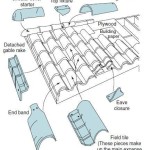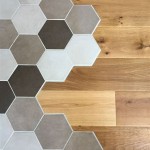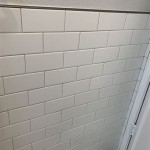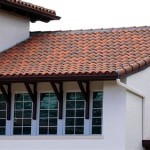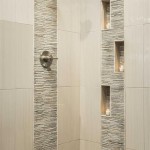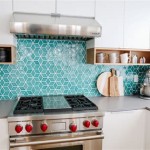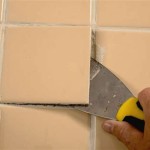Do You Need Backer Board For Tile On Concrete Floor?
Laying tile on a concrete floor is a common practice in both residential and commercial construction. Concrete provides a solid, stable subfloor that, in many cases, seems ideal for directly receiving tile. However, the question of whether to install backer board over concrete before tiling is a subject of considerable debate and depends heavily on the specific conditions of the concrete slab and the intended use of the tiled area. This article explores the various factors that influence the decision, providing a comprehensive overview of when backer board is necessary, when it might be beneficial, and when it is likely unnecessary.
Backer board, also known as cement board or cementitious backer unit (CBU), is a rigid panel made of cement, aggregate, and reinforcing mesh. It is designed to provide a stable, water-resistant surface specifically for tiling. While adhering tile directly to concrete is possible, backer board offers several advantages that can significantly improve the longevity and performance of the tiled floor.
Key Considerations for Determining Backer Board Necessity
The decision to use backer board hinges on a number of factors related to the properties of the concrete slab, the characteristics of the tile, and the environmental conditions to which the floor will be exposed. These factors provide a framework for assessing the potential risks associated with direct tile installation on concrete and whether those risks can be mitigated by the use of backer board.
1. Condition and Preparation of the Concrete Slab: The condition of the concrete slab is paramount. Any cracks, unevenness, or instability in the concrete can lead to tile cracking and failure. A properly prepared concrete slab should be structurally sound, level, and free of any contaminants that could interfere with the adhesion of the tile mortar. Minor cracks can be addressed with crack isolation membranes, but significant cracking or unevenness may necessitate the installation of backer board to provide a stable and level surface. The presence of moisture within the concrete or evidence of past water damage is a critical concern. Concrete is porous and can wick moisture from the ground or surrounding environment. Excess moisture can compromise the bond between the tile and the concrete, leading to tile detachment. Backer board can provide a moisture barrier in some cases, although proper waterproofing methods should still be considered.
Thorough cleaning is essential. The concrete surface must be free of dust, dirt, grease, paint, and any other materials that could prevent proper mortar adhesion. Mechanical abrasion, such as grinding or shot blasting, may be necessary to remove surface contaminants and create a slightly rough texture that enhances bonding. If the concrete slab is not level within acceptable tolerances, self-leveling underlayment (SLU) may be required to create a smooth, flat surface for either direct tile installation or the installation of backer board. Failure to adequately prepare the concrete slab can result in a multitude of problems, including uneven tile surfaces, cracked tiles, and premature floor failure.
2. Type of Tile and Intended Use: The type of tile being installed and the intended use of the tiled area also influence the decision. Large-format tiles, for example, are more susceptible to cracking if the underlying surface is not perfectly level and stable. The weight of the tile itself can exacerbate any underlying imperfections in the concrete slab. Areas subject to heavy foot traffic, high moisture levels, or significant temperature fluctuations require a more robust tile installation system. In such cases, backer board can provide an additional layer of protection and durability. Specifically, for areas prone to moisture, such as bathrooms or kitchens, the water-resistant properties of backer board offer significant benefits. Even with proper sealing, concrete can absorb moisture, which can lead to mold growth and damage to the subfloor. Backer board helps to mitigate these risks by providing a barrier against moisture penetration.
Consider also the inherent flexibility or rigidity of the tile. Some types of natural stone tile, for instance, may be more prone to cracking if installed directly over a potentially fluctuating concrete slab. The backer board can act as a decoupling membrane, absorbing some of the stress and reducing the likelihood of tile failure. The use of uncoupling membranes, in addition to or instead of backer board, is also a valid consideration, particularly for floors with known movement or cracking issues.
3. Environmental Conditions and Building Codes: Environmental conditions play a significant role. Areas with high humidity or temperature variations necessitate a more resilient installation. These conditions can cause the concrete to expand and contract, potentially leading to tile cracking or detachment. Local building codes often specify requirements for tile installation, particularly in wet areas. These codes may mandate the use of backer board or other moisture-resistant materials to ensure the longevity and safety of the tiled floor. Failing to comply with building codes can result in costly rework and potential legal liabilities.
Additionally, consider the heating and cooling systems in the building. Radiant floor heating systems, for example, require careful consideration of the materials used for tile installation. Backer board can help to distribute heat evenly and prevent cracking caused by thermal expansion and contraction. However, it is crucial to select a backer board material that is compatible with radiant heating systems and to follow the manufacturer's recommendations for installation.
Potential Benefits of Using Backer Board on Concrete Floors
Even when not strictly required, backer board offers several potential benefits that can enhance the performance and longevity of a tiled concrete floor. These benefits relate to moisture resistance, crack prevention, and overall floor stability.
Improved Moisture Resistance: Backer board is inherently more water-resistant than concrete. While concrete can be sealed, it remains porous and susceptible to moisture absorption. Backer board provides an additional barrier against moisture penetration, helping to protect the subfloor from water damage and mold growth. This is particularly important in areas such as bathrooms, kitchens, and laundry rooms, where moisture exposure is common. Specific types of backer board are designed for wet areas and offer enhanced water resistance. These boards typically have a special coating or composition that further reduces the risk of moisture absorption.
Crack Prevention and Stress Distribution: Backer board can help to prevent cracks in the tile by providing a more stable and uniform surface. It acts as a decoupling membrane, absorbing some of the stress caused by movement in the concrete slab. This is especially beneficial in areas where the concrete is prone to cracking or where there are expansion joints. The backer board distributes the stress evenly across the surface, reducing the likelihood of tile cracking. The rigidity of the backer board also helps to prevent the tile from flexing, which can lead to grout cracking and tile detachment. By providing a more solid and stable base, backer board can significantly extend the lifespan of the tiled floor.
Enhanced Tile Adhesion: Backer board provides a superior surface for tile adhesion compared to concrete. The rough texture of backer board allows the tile mortar to bond more effectively, creating a stronger and more durable bond. This is particularly important for large-format tiles or tiles that will be subjected to heavy traffic. The enhanced adhesion reduces the risk of tiles becoming loose or detached, which can be a safety hazard and require costly repairs. Proper installation of backer board, including the use of thin-set mortar and screws, further enhances the bond between the backer board and the concrete subfloor.
Alternatives to Backer Board
While backer board is a common and effective solution for preparing concrete floors for tiling, several alternatives exist that may be more suitable in certain situations. These alternatives include crack isolation membranes, self-leveling underlayments, and direct bonding methods.
Crack Isolation Membranes: Crack isolation membranes are thin, flexible sheets that are applied directly to the concrete surface. These membranes are designed to prevent cracks in the concrete from transferring to the tile layer. They are particularly useful in situations where the concrete slab has minor cracks or is prone to movement. Crack isolation membranes are typically less expensive and easier to install than backer board. However, they may not provide the same level of moisture resistance or stability as backer board. The choice between a crack isolation membrane and backer board depends on the severity of the cracking and the specific requirements of the installation.
Self-Leveling Underlayments: Self-leveling underlayments (SLUs) are cement-based mixtures that are poured over the concrete surface to create a smooth, level substrate. SLUs are used to correct unevenness or slopes in the concrete floor. They can also be used to encase radiant heating systems. Once the SLU has cured, the tile can be installed directly on top. SLUs are a good option for floors that are significantly uneven or require a level surface for large-format tiles. However, they can be more expensive than backer board and require careful installation to ensure proper performance.
Direct Bonding Methods: In some cases, it may be possible to bond the tile directly to the concrete without using backer board or other underlayments. This method requires careful preparation of the concrete surface, including thorough cleaning and the application of a bonding agent. Direct bonding is typically only suitable for concrete floors that are in good condition and are not subject to excessive moisture or movement. The success of direct bonding depends on the quality of the bonding agent and the skill of the installer. It is essential to follow the manufacturer's instructions carefully to ensure a strong and durable bond.
Ultimately, the decision of whether or not to use backer board for tile on a concrete floor is a nuanced one that requires careful consideration of the specific conditions and requirements of the project. Consulting with a qualified tile installer or construction professional is highly recommended to ensure that the appropriate methods and materials are selected for a successful and long-lasting tile installation.

How To Install Cement Board On A Floor Diy Family Handyman

Installing Cement Backerboard For Tile Flooring Hometips

Cement Board Installation On Floors 5 Mistakes To Avoid Diytileguy

How To Install Hardie Backer Cement Board On Floors James Pros

Durock Cement Board Do S And Dont
How To Install Tiles On Concrete Floors Stonesuper

How To Install Cement Backer Board For Floor Tile Installation The Home Depot

Backer Board The Pros And Cons Of Various Tile Backers

Cement Backerboard Floor Tile Installation Uncookie Cutter

Cement Board What It Is When To Use Home Tips For Women
Related Posts

